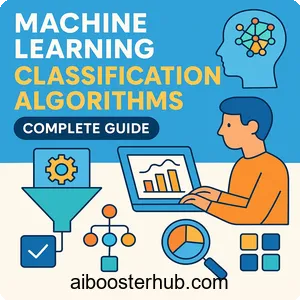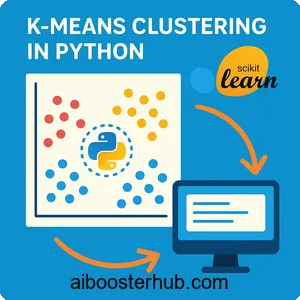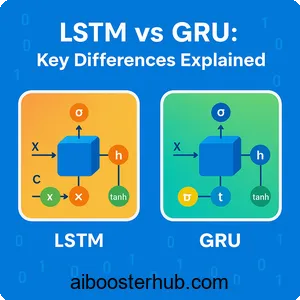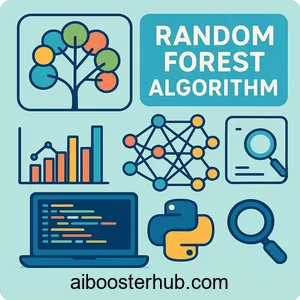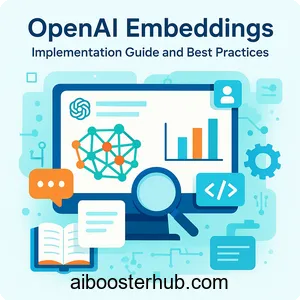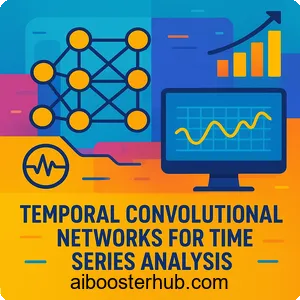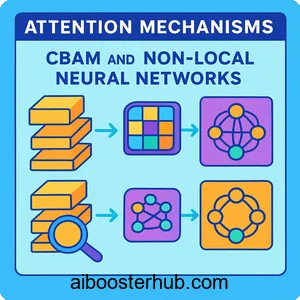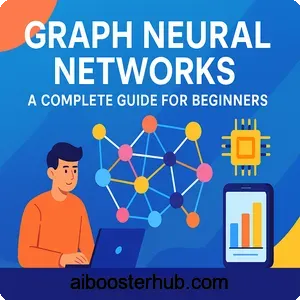Neural Network Research: Landmark Papers and Breakthroughs
Groundbreaking neural network research has fundamentally transformed artificial intelligence, pushing the boundaries of machine learning and capability. From image recognition to natural language processing, the evolution of neural networks represents one of the most significant technological advances of our time. This article explores landmark papers and breakthroughs shaping modern AI and influencing research across diverse domains.
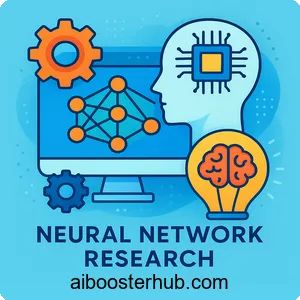
Content
Toggle1. The deep learning revolution in computer vision
ImageNet classification with deep convolutional neural networks
AlexNet’s breakthrough in ImageNet classification marked a watershed moment in computer vision and deep learning. This research showed deep convolutional architectures dramatically outperforming traditional computer vision on large-scale image recognition.
The architecture introduced several key innovations that became standard practice in neural network research. The network had five convolutional and three fully connected layers, using ReLU instead of sigmoid/tanh activations. This choice significantly accelerated training by avoiding the vanishing gradient problem that plagued deeper networks.
import torch
import torch.nn as nn
class AlexNetStyle(nn.Module):
def __init__(self, num_classes=1000):
super(AlexNetStyle, self).__init__()
self.features = nn.Sequential(
nn.Conv2d(3, 64, kernel_size=11, stride=4, padding=2),
nn.ReLU(inplace=True),
nn.MaxPool2d(kernel_size=3, stride=2),
nn.Conv2d(64, 192, kernel_size=5, padding=2),
nn.ReLU(inplace=True),
nn.MaxPool2d(kernel_size=3, stride=2),
nn.Conv2d(192, 384, kernel_size=3, padding=1),
nn.ReLU(inplace=True),
nn.Conv2d(384, 256, kernel_size=3, padding=1),
nn.ReLU(inplace=True),
nn.Conv2d(256, 256, kernel_size=3, padding=1),
nn.ReLU(inplace=True),
nn.MaxPool2d(kernel_size=3, stride=2),
)
self.classifier = nn.Sequential(
nn.Dropout(),
nn.Linear(256 * 6 * 6, 4096),
nn.ReLU(inplace=True),
nn.Dropout(),
nn.Linear(4096, 4096),
nn.ReLU(inplace=True),
nn.Linear(4096, num_classes),
)
def forward(self, x):
x = self.features(x)
x = torch.flatten(x, 1)
x = self.classifier(x)
return x
The impact on ieee transactions on neural networks and learning systems and similar publications was immediate and profound. Researchers worldwide began exploring deeper architectures, leading to innovations like VGGNet, ResNet, and beyond. ImageNet demonstrated that neural networks learn superior hierarchical features given enough data and computing power.
MobileNets: Efficient convolutional neural networks for mobile vision applications
As neural networks grew deeper and more accurate, a parallel challenge emerged: deploying these models on resource-constrained devices. MobileNets research addressed this gap by introducing depthwise separable convolutions for mobile vision applications.
Traditional convolutions are computationally expensive because they simultaneously filter and combine inputs into new representations. MobileNets split this into depthwise convolution (one filter per channel) and pointwise convolution (combining outputs). This factorization dramatically reduces computation and model size.
The computational cost comparison is striking. A standard convolution layer with kernel size \(D_K\), input channels \(M\), output channels \(N\), and feature map size \(D_F\) requires:
$$\text{Cost}_{\text{standard}} = D_K \times D_K \times M \times N \times D_F \times D_F$$
While depthwise separable convolution requires:
$$\text{Cost}_{\text{separable}} = D_K \times D_K \times M \times D_F \times D_F + M \times N \times D_F \times D_F$$
The reduction factor is approximately:
$$\frac{1}{N} + \frac{1}{D_K^2}$$
For a 3×3 convolution, this represents an 8-9× reduction in computation, making real-time vision applications feasible on smartphones and embedded devices.
2. Knowledge transfer and model compression
Distilling the knowledge in a neural network
The concept of distilling the knowledge in a neural network introduced an elegant approach to model compression and knowledge transfer. This research showed student networks could mimic teacher networks using both hard labels and soft probability distributions.
The key insight is that the teacher’s output distribution contains rich information about the similarity structure of the data. Teacher probabilities for incorrect classes encode valuable knowledge about relative error likelihoods.
The distillation loss combines two objectives:
$$\mathcal{L} = \alpha \, \mathcal{L}_{\text{hard}}(y, \sigma(z_s))
+ (1 – \alpha) \, \mathcal{L}_{\text{soft}}(\sigma(z_t / T), \sigma(z_s / T))$$
where \(z_s\) and \(z_t\) are the student and teacher logits, \(T\) is the temperature parameter, \(\sigma\) is the softmax function, and \(\alpha\) balances the two terms.
import torch.nn.functional as F
def distillation_loss(student_logits, teacher_logits, labels, temperature=3.0, alpha=0.7):
"""
Compute knowledge distillation loss
Args:
student_logits: Raw predictions from student model
teacher_logits: Raw predictions from teacher model
labels: True labels
temperature: Softening parameter for probability distributions
alpha: Weight balancing hard and soft targets
"""
# Hard target loss (standard cross-entropy)
hard_loss = F.cross_entropy(student_logits, labels)
# Soft target loss (distillation from teacher)
soft_student = F.log_softmax(student_logits / temperature, dim=1)
soft_teacher = F.softmax(teacher_logits / temperature, dim=1)
soft_loss = F.kl_div(soft_student, soft_teacher, reduction='batchmean')
# Scale soft loss by temperature squared (as in original paper)
soft_loss = soft_loss * (temperature ** 2)
# Combine losses
total_loss = alpha * hard_loss + (1 - alpha) * soft_loss
return total_loss
This technique has become fundamental in neural network research, enabling deployment of powerful models in production environments where computational resources are limited. Publications in neurocomputing and neural computation have extensively explored variations and applications of this approach.
3. Domain adaptation and transfer learning
Domain-adversarial training of neural networks
The challenge of domain shift—where training and test data come from different distributions—has been elegantly addressed through domain-adversarial training of neural networks. This approach learns representations that are simultaneously discriminative for the main task and invariant to domain differences.
The architecture consists of three components: a feature extractor, a label predictor, and a domain classifier. During training, the feature extractor learns to fool the domain classifier (making features domain-invariant) while maintaining high accuracy on the label prediction task. This is achieved through gradient reversal.
The optimization objective can be expressed as:
$$\min_{θ_f, θ_y} \max_{θ_d} \mathcal{L}_y(θ_f, θ_y) – λ\mathcal{L}_d(θ_f, θ_d)$$
where \(θ_f\), \(θ_y\), and \(θ_d\) are parameters of the feature extractor, label predictor, and domain classifier respectively, and \(λ\) controls the trade-off between label prediction and domain invariance.
import torch
import torch.nn as nn
class GradientReversalLayer(torch.autograd.Function):
@staticmethod
def forward(ctx, x, lambda_param):
ctx.lambda_param = lambda_param
return x.view_as(x)
@staticmethod
def backward(ctx, grad_output):
return grad_output.neg() * ctx.lambda_param, None
class DomainAdversarialNetwork(nn.Module):
def __init__(self, input_dim, num_classes, num_domains):
super(DomainAdversarialNetwork, self).__init__()
# Feature extractor
self.feature_extractor = nn.Sequential(
nn.Linear(input_dim, 512),
nn.ReLU(),
nn.Dropout(0.5),
nn.Linear(512, 256),
nn.ReLU(),
nn.Dropout(0.5)
)
# Label predictor
self.label_predictor = nn.Sequential(
nn.Linear(256, 128),
nn.ReLU(),
nn.Linear(128, num_classes)
)
# Domain classifier
self.domain_classifier = nn.Sequential(
nn.Linear(256, 128),
nn.ReLU(),
nn.Linear(128, num_domains)
)
def forward(self, x, lambda_param=1.0):
features = self.feature_extractor(x)
# Label prediction (normal path)
label_output = self.label_predictor(features)
# Domain prediction (with gradient reversal)
reversed_features = GradientReversalLayer.apply(features, lambda_param)
domain_output = self.domain_classifier(reversed_features)
return label_output, domain_output
This approach has proven remarkably effective across various applications, from adapting models trained on synthetic data to real-world scenarios, to transferring knowledge between different languages or visual domains. Research published in ieee transactions has demonstrated its versatility across multiple problem domains.
4. Sequence modeling and natural language processing
Sequence to sequence learning with neural networks
The paradigm of sequence to sequence learning with neural networks revolutionized how we approach variable-length input-output problems. This architecture uses two recurrent neural networks: an encoder that processes the input sequence into a fixed-dimensional context vector, and a decoder that generates the output sequence from this representation.
The encoder computes hidden states for each input token:
$$h_t = f(x_t, h_{t-1})$$
The final hidden state (h_T) becomes the context vector (c). The decoder then generates output tokens:
$$s_t = g(y_{t-1}, s_{t-1}, c)$$ $$p(y_t | y_1, …, y_{t-1}, x) = \text{softmax}(W_s s_t)$$
import torch
import torch.nn as nn
class Seq2SeqEncoder(nn.Module):
def __init__(self, vocab_size, embed_dim, hidden_dim, num_layers=2):
super(Seq2SeqEncoder, self).__init__()
self.embedding = nn.Embedding(vocab_size, embed_dim)
self.lstm = nn.LSTM(embed_dim, hidden_dim, num_layers,
batch_first=True, dropout=0.3)
def forward(self, x):
# x shape: (batch, seq_len)
embedded = self.embedding(x)
# embedded shape: (batch, seq_len, embed_dim)
outputs, (hidden, cell) = self.lstm(embedded)
return hidden, cell
class Seq2SeqDecoder(nn.Module):
def __init__(self, vocab_size, embed_dim, hidden_dim, num_layers=2):
super(Seq2SeqDecoder, self).__init__()
self.embedding = nn.Embedding(vocab_size, embed_dim)
self.lstm = nn.LSTM(embed_dim, hidden_dim, num_layers,
batch_first=True, dropout=0.3)
self.fc = nn.Linear(hidden_dim, vocab_size)
def forward(self, x, hidden, cell):
# x shape: (batch, 1)
embedded = self.embedding(x)
output, (hidden, cell) = self.lstm(embedded, (hidden, cell))
prediction = self.fc(output)
return prediction, hidden, cell
class Seq2Seq(nn.Module):
def __init__(self, encoder, decoder):
super(Seq2Seq, self).__init__()
self.encoder = encoder
self.decoder = decoder
def forward(self, src, trg, teacher_forcing_ratio=0.5):
batch_size = src.shape[0]
trg_len = trg.shape[1]
trg_vocab_size = self.decoder.fc.out_features
outputs = torch.zeros(batch_size, trg_len, trg_vocab_size).to(src.device)
hidden, cell = self.encoder(src)
# First input to decoder is <sos> token
input = trg[:, 0].unsqueeze(1)
for t in range(1, trg_len):
output, hidden, cell = self.decoder(input, hidden, cell)
outputs[:, t, :] = output.squeeze(1)
# Teacher forcing
teacher_force = torch.rand(1).item() < teacher_forcing_ratio
top1 = output.argmax(2)
input = trg[:, t].unsqueeze(1) if teacher_force else top1
return outputs
This architecture became the foundation for machine translation, text summarization, and conversational AI systems. The work has been extensively cited in neural computation journals and has inspired countless variations and improvements.
5. Scaling neural networks to unprecedented sizes
Outrageously large neural networks
The exploration of outrageously large neural networks introduced the concept of sparsely-gated mixture-of-experts layers, enabling models with billions or even trillions of parameters while maintaining computational efficiency. Rather than activating the entire network for each input, this approach routes each example to a subset of “expert” sub-networks.
The mixture-of-experts layer computes:
$$y = \sum_{i=1}^{n} G(x)_i E_i(x)$$
where \(E_i\) are the expert networks and \(G(x)\) is a gating network that produces sparse weights:
$$G(x) = \text{Softmax}(\text{TopK}(x \cdot W_g))$$
The TopK function keeps only the k largest values, setting others to negative infinity before the softmax operation. This ensures that only a small number of experts are activated for each input.
The load balancing challenge is addressed through an auxiliary loss that encourages equal utilization of experts:
$$\mathcal{L}_{\text{aux}} = \alpha \cdot \text{CV}\left(\sum_{x \in B} G(x)\right)^2$$
where CV is the coefficient of variation and (B) is a batch of examples. This prevents the model from always routing to the same experts.
The implications for neural network research have been profound. These techniques enable training models with capacity far exceeding what would be feasible with dense architectures, opening new frontiers in natural language understanding and generation. Publications in ieee transactions on neural networks and learning systems have explored various applications and refinements of this approach.
6. Adversarial perspectives and robustness
Understanding hostile neural networks
The concept of hostile neural networks and adversarial examples revealed a fundamental vulnerability in neural networks: small, imperceptible perturbations to inputs can cause dramatic misclassifications. An adversarial example (x’) is crafted from a clean input (x) by adding carefully designed noise:
$$x’ = x + \epsilon \cdot \text{sign}(\nabla_x \mathcal{L}(θ, x, y))$$
where \(\epsilon\) controls perturbation magnitude and \(\nabla_x \mathcal{L}\) is the gradient of the loss with respect to the input.
def fgsm_attack(model, x, y, epsilon=0.1):
"""
Fast Gradient Sign Method attack
Args:
model: Neural network model
x: Input tensor
y: True labels
epsilon: Perturbation magnitude
"""
x.requires_grad = True
output = model(x)
loss = F.cross_entropy(output, y)
model.zero_grad()
loss.backward()
# Create adversarial example
x_adv = x + epsilon * x.grad.sign()
x_adv = torch.clamp(x_adv, 0, 1) # Ensure valid pixel range
return x_adv.detach()
def pgd_attack(model, x, y, epsilon=0.1, alpha=0.01, num_iter=40):
"""
Projected Gradient Descent attack (iterative FGSM)
"""
x_adv = x.clone().detach()
for _ in range(num_iter):
x_adv.requires_grad = True
output = model(x_adv)
loss = F.cross_entropy(output, y)
model.zero_grad()
loss.backward()
# Update adversarial example
x_adv = x_adv + alpha * x_adv.grad.sign()
# Project back to epsilon ball
perturbation = torch.clamp(x_adv - x, -epsilon, epsilon)
x_adv = torch.clamp(x + perturbation, 0, 1).detach()
return x_adv
This research direction has spawned an entire subfield focused on adversarial robustness, with methods like adversarial training (training on adversarial examples) and certified defenses becoming standard topics in neural network research. The work has influenced security considerations across computer vision, natural language processing, and other domains.
The influence of foundational researchers
Researchers like michael nielsen have played crucial roles in making neural network research accessible to broader audiences. Through educational materials and clear explanations of complex concepts, these contributions have lowered barriers to entry and accelerated the field’s growth. The interplay between rigorous mathematical foundations published in journals like neurocomputing and accessible educational resources has created a vibrant research ecosystem.
7. Future directions and open challenges
The trajectory of neural network research continues to accelerate, with several promising directions emerging. Efficient architectures that rival mobilenets efficient convolutional neural networks for mobile vision applications are being developed for language models and other domains. Techniques for distilling the knowledge in a neural network are evolving to handle increasingly complex teacher models and diverse student architectures.
The challenge of domain adaptation through methods like domain-adversarial training of neural networks remains actively researched, particularly for low-resource scenarios and multimodal learning. Scaling approaches inspired by outrageously large neural networks are being refined to balance capacity, efficiency, and environmental considerations.
Robustness against hostile neural networks and adversarial attacks continues to be a critical concern, especially as AI systems are deployed in safety-critical applications. The research published in ieee transactions, neural computation, and neurocomputing journals reflects the field’s maturation and the increasing sophistication of both attacks and defenses.
8. Conclusion
The landmark papers in neural network research have fundamentally reshaped artificial intelligence, from the breakthrough of imagenet classification with deep convolutional neural networks to the sophisticated techniques for knowledge distillation, domain adaptation, and sequence modeling. Each innovation has built upon previous work, creating a rich tapestry of interconnected ideas that continue to drive progress in the field. The research published in ieee transactions on neural networks and learning systems and other premier venues reflects both the depth and breadth of ongoing investigations.
As neural networks continue to evolve, the foundational insights from these breakthrough papers remain relevant, informing new architectures and training methodologies. Whether developing efficient models for mobile applications, scaling to unprecedented sizes, or ensuring robustness against adversarial attacks, researchers draw inspiration from these seminal works while pushing boundaries in new directions. The future of neural network research promises even more exciting developments as the field continues to mature and expand into new application domains.

